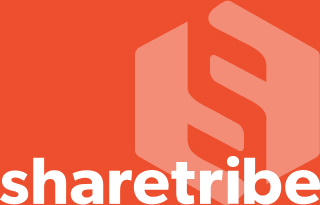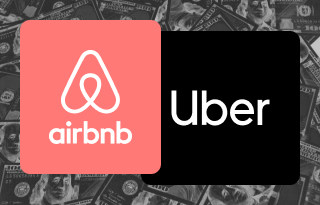Subscribe and you will promptly receive new published articles from the blog by mail
Living in a time of rapid technological progress, we can see how fast the concept of economy develops. More and more fresh insights appear every year. One of the economic concept divisions is the juxtaposition of the sharing and on-demand economies. At the same time, marketplace-like and aggregator-driven businesses have their own differences.
Let’s discover the core aspects of sharing and on-demand economies and learn how to distinguish marketplace business from the aggregator-based one.
A Sharing Economy, an On-Demand Economy, Aggregator and a Marketplace Business – Interpretation of Concepts

We have heard countless people say that there is no big difference between an aggregator and a marketplace business. Without a doubt, there are certain points where the sharing concept and on-demand economy overlap, but they are pretty distinctive in primary concepts.
As you may have guessed, the whole idea of a sharing economy is simple – to share. People all around the globe enable their earning potential by monetizing their knowledge of possessions that they are not currently using. The sharing economy genesis is to have the opportunity to use others’ possessions for a commission.
At the same time, the primary design concept of the on-demand economy is entirely different. It strives to satisfy the urgent need to immediately gain access to a specific resource, service, or product.
Imagine: you need to reach the desired location in a timely manner. You may suggest using Uber, which shows the principle of the on-demand economy. You need something – you immediately get it.
As you see, there are some differences between sharing and on-demand models:
- The client is experiencing the service rather than using the product by himself or herself;
- Sharing economy implies you actually get the use of a product. For instance, you rent a car to drive for a weekend. This is sharing the vehicle and, therefore, the sharing concept.

Regulation Differences
Another point where these two economic models differ is the regulation. While the sharing economy has a low regulation impact, the on-demand economy relies on the power of the main economy entity.
Let’s consider the Uber example one more time. Uber drivers can’t actually set a commission for customers. They just provide the services for customers, and all the financial aspects are regulated by the brand itself.
It has both a positive and negative impact on the economy ecosystem at the same time. The advantages of these regulation terms are that customers receive services in a timely manner. On the other hand, service providers can’t establish their commission policy and, hence, can’t influence the scope significantly.
The Different Concepts

Now that you have a grasp of the different aspects of both sharing and on-demand models, let’s figure out how the aggregator and marketplace businesses work.
Marketplaces are the eCommerce websites that work as a business platform only. Marketplaces can sell their own products on the website, but the primary objective is to provide this opportunity to as many third-party vendors as possible.
Marketplace business covers the concept of an open market. There can be multiple offers of the same product or service delivered at a different price and conditions. It’s easier to understand if you consider it as a digital analog of the conventional market.
What is more crucial, vendors can still have their corporate identity on the marketplace. The actual deal happens on the eCommerce platform, but salespeople can place the info about their brand, other products, etc. there.
An eCommerce platform is also a quality warrantor. The task of a marketplace is to manage the sales and make sure both the buyer and the vendor are happy with the purchase. We find Amazon a decent example of a proper marketplace. If we draw a parallel with the previous juxtaposition, a marketplace has a lot in common with the sharing economy.
The aggregator business – it may seem – overlaps with the eCommerce platform, on gathering third-party vendors. However, its other aspects are different.
The whole idea – the same as in the on-demand economy – is to focus on the central business entity. Here are the integral points of the aggregator model:
- Standardized commission. Aggregator business relies on a single commission standard;
- Standardized quality. All the third-party vendors should conform to the quality standards to become a partner vendor of the aggregator business. The latter usually has a special QA service to verify the production decency;
- No corporate identity. Every participant becomes a no-name service provider and works on behalf of the aggregator company.
Uber is an aggregator business. You become partners with the company and receive a job. At the same time, you have no right to set your own commission or work under any brand name different from Uber.
Advantages of eCommerce Marketplace

Both aggregator and marketplace businesses are viable and satisfy the needs of their target groups. However, we find the eCommerce platform a more progressive model.
While the aggregator dictates the terms and manages the whole process, the marketplace creates an opportunity for vendors to develop, become more competitive, and meet customer demands better. It’s a natural flow of the market competition, and the practice shows its beneficial influence on the industry in general.
Last Thought
We can hardly deny that the marketplace isn’t perfect. But if you can manage to level its disadvantages with quality services, you will make a positive impact on the market development. Well, and also a fortune. Just get in touch!
Recommended articles
 How the new marketplace can rise straight to the top of e-commerce chart
How the new marketplace can rise straight to the top of e-commerce chartToday's world lives in the rhythm of changing digital technologies that affect every aspect of human life. With the reverse marketplace, the economy is also changing - a completely new model of interaction between customer and business occupies a special place today.
 Sharetribe: Your Free Pass To Local Markets
Sharetribe: Your Free Pass To Local MarketsHave you heard about Airbnb, BlaBlacar or Aliexpress? You probably have, because creating P2P (peer-to-peer) marketplaces is one of most popular startup ideas just now. We’re just at the beginning of the platform era, and we’re certain to see excellent innovation in the field of building marketplaces.
 Trust As a Currency: How Airbnb, Uber, and other companies turned trusted platforms into multibillion-dollar businesses
Trust As a Currency: How Airbnb, Uber, and other companies turned trusted platforms into multibillion-dollar businessesTrust is among the most valuable assets of any business - and essential to forming strong ties with clients, partners, and employees. But if you’re in the online marketplace game, the importance of cultivating trust is elevated to a new level.
 Why Your Business Can Benefit From Having a Mobile App
Why Your Business Can Benefit From Having a Mobile AppAs more and more people become mobile users, marketers strive to reach them via their devices. This is where mobile applications come in handy. Let's find out why you need a mobile app and how to make the most of it.






